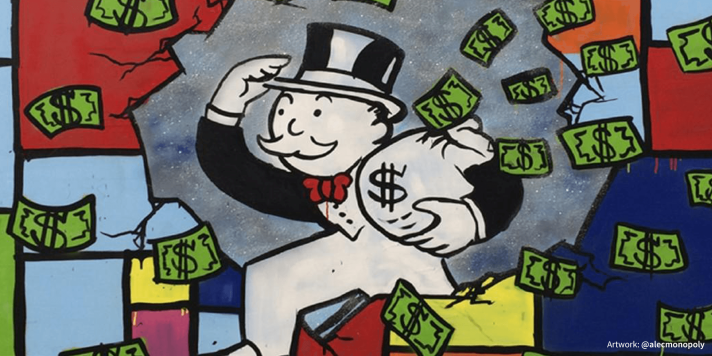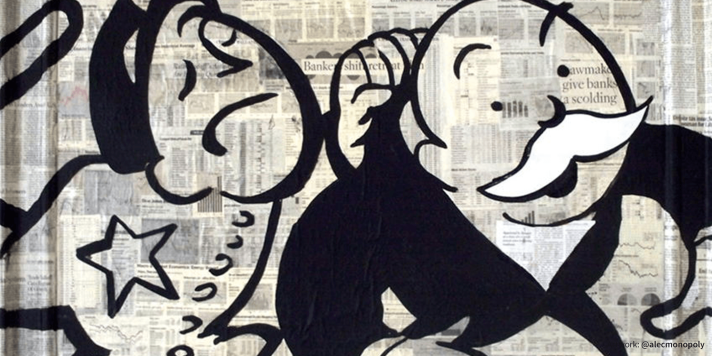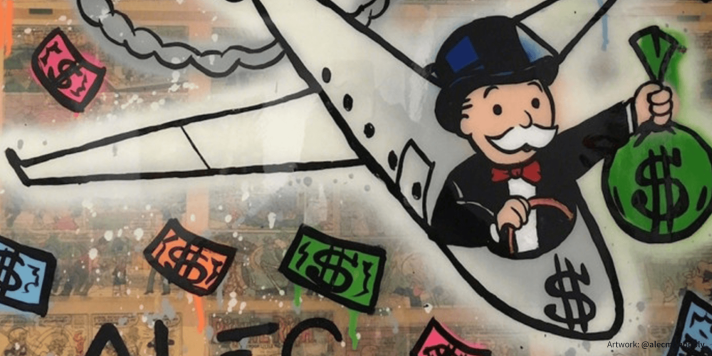
“Anyone can take the easy road, for that reason it is the hard road that leads to the most beautiful destination” – Unknown.
Decred is unique, in more ways than one. It has an on-chain user activated hard fork (UAHF) voting system, a hybrid Proof-of-Work (PoW)/Proof-of-Stake (PoS) design, and a unique funding model. Each of these innovations have been developed with decentralized governance in mind. Why? Because we all know that a chain is only as strong as its weakest link. A truly decentralized system has no single point of failure.
Decred’s on-chain UAHF voting system is just the outer layer of governance – the way users make decisions. Although the hybrid PoW/PoS design enhances network security, its purpose is also to allow on-chain voting to take place, and prevent PoW miner domination. In turn, the economics of the on-chain voting system, such as ticket buying and staking rewards, incentivize mass user participation in the network, which therefore ensures decentralized decision-making. Buying tickets is fun, but really the process is just one cog in the greater governance system. This blog will talk about the very beginning of this unique system – its funding model.

Over the last few years an array of cryptocurrency funding models have emerged. Notable models have included the instamine, as seen with coins like Dash, where approximately 15% of the coin’s total supply was mined in the first 48 hours, and the Zcash founders reward, where 10% of the total coin supply will be distributed to the stakeholders in the Zcash company. However, the most popular funding method by far has been the initial coin offering (ICO), where we have recently seen Tezos break the record, raising a staggering $232,000,000. The question is – are all these funding models decentralized? Are they fair? And, are they legal?
Amongst the cryptocurrency community I feel there are unwritten rules – rules that make a project legitimate in the eyes of the community and give them faith in it. I believe these rules are derived from the communities’ cypherpunk roots and the cypherpunk manifesto. For this reason I believe the community values the fundamental principles of privacy, transparency, decentralization, and working together for the common good. Cryptocurrency has the ability to give people real financial freedom. For centuries banks have controlled and profited from us, but the blockchain revolution has the power to change that. However, do all cryptocurrency projects abide by these fundamental principles? To fully understand the importance of the considerations that need to be made when funding a cryptocurrency, we must take a more detailed look at the various methods that the more notable projects have previously used to raise funds.
Firstly, the instamine – is it fair? Or does it represent a founder taking advantage of the system for his or her own financial gain? In my opinion, it depends on the project. You may think that the millions of dollars that the founder of Dash has made from his instamine goes against the community’s principles. But on the other hand, when Satoshi Nakamoto mined more than 1 million coins at an extremely low difficulty (relating to almost 5% of all Bitcoins that will ever exist), was it their intent to profit from the system? To date it seems the answer is no, as their coins have never moved. But we have to trust that they never will be.
However, whilst the instamine is often considered to be a negative feature of Dash’s funding model, a more positive point is the fact that they at least had a working product when the project launched. Furthermore, the ongoing 10% development subsidy taken from each block mined ensures that the coin remains self-funded, without the need to rely on any external funding.
Zcash also has a rather unique funding model with their founders reward, which is similar to Dash’s development subsidy. For the first four years 20% of all block rewards will go to the Zcash founders, which represents 10% of all coins that will ever exist. The founders include early stage investors, developers, and the Zcash foundation. It is clear that some thought has been put into this funding model to try and make it fairer. Zcash has an amazing team of developers and scientists who are working on cutting edge cryptography, and early stage funding from investors paid for their salaries to help get the project up and running. But in spite of this, there has still been some criticism of the founders reward. Some people feel it is unethical that the founding investors are financially benefiting from the project. As a result we have seen Rhett Creighton create Zclassic, removing the 20% fee because he believed the miners deserve to earn their fair reward.
Nevertheless, in my opinion the founders reward is a fairer way of funding a project than carrying out an ICO or instamine, as at least there is an incentive for the developers to continue adding value the project over time. And, to give credit where credit is due, Zcash did make a positive step forward when they created The Zcash Foundation and decided to allocate portion of the founders reward to it. In addition, when the company’s founder, Zooko, decided to donate half of all the Zcash coins he was due to receive from the founders reward to the foundation, this also helped to clear up some further ethical concerns.
The latest funding craze is the ICO. Over the last month alone $500 million dollars has been invested in ICOs. For those of you that are reading this and don’t know what an ICO is, see this article. But the general basics of an ICO involve a project offering coins, or tokens, to investors in return for a fiat and/or cryptocurrency investment. There are many variations of the ICO – capped, uncapped, and Dutch auction. There are ICOs that distribute all coins to investors, and there are ICOs that withhold a specific amount of coins to fund future development. As a result there are many pros and cons for each of these variations, but overall I believe a few fundamental issues exist.
In the vast majority of cases projects use an ICO to raise anything from tens of millions, to hundreds of millions of dollars, without any working product. Therefore, the first and most obvious issue with this funding method is that it attracts scammers. There have been dozens of scams, where projects such as Declouds and Ebitz have raised millions with nothing but a white paper, and then made off with investors funds never to be heard from again.

On Episode 8 of The Decred Assembly, Monero’s current project organizer Riccardo “FluffyPony” Spagni made his opinion on ICOs clear. Riccardo said “when someone does an ICO my default is – it’s a scam until proven otherwise”. However, Riccardo also stated that he’s “not against the tokenization of securities” but he is “against ICOs being used to sidestep the protocols that have been put in place for the protection of investors”.
In crypto it is often said that “code is law”. If there is no code, and no working product, then it would be fair to say investors should think twice before investing, or double up on their due diligence checks. Without any code people are essentially investing in vaporware. Furthermore, do these projects actually need hundreds of millions of dollars to fund development? What incentive do they have to continue developing if they receive all the money up front? In some cases, project founders have even used this as a get rich quick scheme. In the ICOs that have raised hundreds of millions of dollars, this has turned founders into overnight millionaires. On Episode 9 of The Decred Assembly the creator of Litecoin, Charlie Lee (aka coblee) said he is “very wary of ICOs because most of them are money grabs because they see how easy it is to raise money”.
In the case of the recent Tezos ICO, the company Digital Ledger Solutions (DLS), that is currently controlled by the founders of Tezos, will be sold to the Tezos Foundation. Once the Tezos blockchain has operated successfully for three months DLS’ shareholders will receive 8.5% of the contributions made during the ICO, in addition to a 10% allocation of the all tokens from the genesis block, placed in a smart contract that will vest monthly over a period of 48 months. Using the figure cited of $232 million, this means DLS shareholders will receive an initial payment of around $19.72 million (representing 8.5% of fundraiser contributions). Furthermore, if the investors who took part in the Tezos ICO were to just break even, this would mean DLS shareholders would also receive an allocation of $23.2 million worth of Tezzies (representing 10% of all tokens issued in the genesis block). Together these two figures equate to a staggering amount of over $40 million dollars.
It was nice to see Tezos take extra precautions to safeguard those investing in the ICO through the addition of a facility that allowed investments to be made offline. This additional security measure is a positive step in providing an extra layer of protection to ICO investors, and I believe it is something that ICOs should consider in future. However, in my opinion, if a project raises money before having a working product then they are in direct breach of the “code is law” principle, and in breach of the unwritten rules of the cryptocurrency community itself. Therefore I believe we should all demand “code before ICO” to protect investors.
A recent bulletin from the Securities and Exchange Commission (SEC) suggests this might not be the only law these ICOs are breaking. In another report the SEC ruled that tokens issued in the DAO ICO were in fact securities, and are therefore in direct breach of federal securities laws. Whilst the DAO was the first ICO to come under investigation, I doubt it be the last. I suspect there will be further repercussions for other projects that have raised funds and issued tokens or coins that fall under the remit of ‘securities’. In a recent Facebook post billionaire investor Tim Draper, who recently backed the Tezos and Bancor ICOs, asked for exemptions for projects that raised funds prior to October 30th 2017 “in the spirit of clarity and encouraging innovation”. Tim is also a shareholder in DLS.
This crackdown was predicted also by Charlie Lee when he spoke on The Decred Assembly. Charlie said “the SEC will come down hard on ICOs because it’s basically like an IPO but without going through the normal regulation. So I think it’s going to end badly”.
In my opinion there are very few projects that have a fair funding model, one of them is the coin Charlie created, Litecoin. The other is Monero. Both Litecoin and Monero rely exclusively on donations and open-source development. These projects have exceptional development teams that are fully committed to their project for the good of the people, and for these reasons the projects are held in high regard by the community. However, both projects also admit that they are vastly underfunded, as they do not receive a steady supply of ongoing donations, which presents difficulties in terms of the rate of development. This is also similar to problem that Bitcoin has had.
Bitcoin is perhaps the greatest gift of all to the cryptocurrency community. In fact, the community didn’t exist before it – Bitcoin is the grandfather of all cryptocurrencies. No one really knows how the creation of Bitcoin was funded, because no one really knows the true identity of the person(s) who created it. But it is widely acknowledged that it was created for the good of the people. To our knowledge creator Satoshi Nakamoto never received any funding before or after its release.
While there are many Bitcoin developers that contribute their time to the Bitcoin project for free, because they believe in its power to make the world a better place, these contributions alone are not enough to keep up with the amount of network maintenance and development that is needed. To address this problem the development team Bitcoin Core (BC) receives ongoing funding from the corporate entity Blockstream, to pay for the salaries of a number of full time developers. Blockstream describe themselves as a “leading provider of blockchain technologies, on the forefront of work in cryptography and distributed systems” that “provides a range of software and hardware solutions and expert professional services to companies deploying new blockchain-based networks”. For obvious reasons this creates a conflict of interest, bringing into question the extent of influence and control that Blockstream has over Bitcoin. Because BC are funded by Blockstream it could be perceived that they have an obligation to make decisions that favour them. Similarly, this could also be said for another notable development team, Bitcoin Unlimited (BU), who are rumoured to have received significant donations of Bitcoin from Bitmain.

Bitmain are the company behind Antpool, the world’s largest Bitcoin miner. Bitmain’s founder, Jihan Wu, is spearheading the campaign to scale Bitcoin by increasing its blocksize. Compared to a second layer scaling solution such as SegWit, an increase in block size allows more on-chain transactions per second, which therefore means more Bitcoin earned from transactions for miners, and therefore more profits for Bitmain. BU also supports the increase in block size as a method to scale Bitcoin. Of course, the influence that Bitmain have had over this decision cannot be confirmed. But again, it is easy to understand why someone may perceive this, and it also clearly highlights that this method of funding is inappropriate for an apparently decentralized blockchain system.
There will always be the need for ongoing network development and maintenance in a blockchain network, but as highlighted by the above examples, if this funding comes directly from an external source then the system may be subject to real or perceived external influence, and therefore centralized control. If a blockchain is to remain truly decentralized, then a decentralized method of funding is required. This is why Decred chose to do things differently, opting for their unique self-funding model instead. Compared to the flair and hype we have seen with many cryptocurrencies that have launched recently, Decred had a very different, more humble beginning.
Those of you that have read my previous article will know that the origin of the Decred project started with Memcoin2 (MC2), and that the project’s early founder was an unknown individual going by the name of Tacotime. When Tacotime first started work on MC2 he was a graduate student who spent hours of his own time on the technical development of the project for free, because he believed it would benefit the community in future. But working alone, with a limited amount of time on his hands due to being a student and holding down a paid job meant development was slow. In contrast, there was a high demand from the community for the project to be developed quickly. But if this was to happen it would mean Tacotime would have to commit to the project full-time, which he couldn’t afford to do. So he considered raising some development funds from the community.
From the outset Tacotime struggled with the ethics of funding the project in this way. Initially the idea was to hold a kickstarter campaign to raise funds, as he did not want to use a premine. However, this way of crowdfunding presented some difficulties, and as a result it went through a series of changes before the final funding model was agreed upon. For years, there were back and forth deliberations over how to ethically fund the development of the project.
It was clear that the entire funding model was thought through in great detail, over a prolonged period of time. In fact, the project took part in what was perhaps one of the earliest public discussions about cryptocurrency funding. Even at this early stage, one of the project’s current organizers, _ingsoc, wanted to ensure that the funding process was as transparent as possible, and that all funds raised should be used solely for development purposes only.
Once the project organizer, _ingsoc, found out Tacotime was really busy with grad school, and didn’t have enough time for development work, he went in search for more developers to help out. It was here _ingsoc stumbled across a company who he thought fitted the bill nicely – Conformal Systems (now known as Company Zero, the current lead development team). _ingsoc decided to set up a meeting between them and Tacotime.
Ideally Tacotime would have loved to have coded the project on his own, but he was realistic, and understood that if he was going to release it in a reasonable time frame he would need the help of some well versed coders too. After meeting with Jake Yocom-Piatt (the current project lead and CEO of Company Zero) and hearing about the background and skills that the Conformal Systems developers had, Tacotime got excited about the project’s future prospects. He liked that that Conformal Systems were strongly dedicated to free and open source software development that assisted users in achieving more security, such as btcd, and also that they were a small company.
Although Tacotime initially intended on holding a fundraiser, he eventually decided to eliminate the premine funding method. This was his reasoning:
“Looking back at all the cryptocurrencies that people actually have faith in, such as Bitcoin, Litecoin, and Peercoin, it seems like the only practical and fair way with which to launch a cryptocurrency is by doing so without the premine. The people who will benefit from such a model will be you, the future users. In the spirit of everything that this community has ever been about, it seems only appropriate to try to develop this myself while I live off of my own savings. It’ll be a rough road ahead, but I hope I will have the continual backing of the community for choosing to develop this for everyone’s benefit with no monetary expectations in return. Development will formally commence tomorrow, and I have left my job so I am free to work on this full time.”
Tacotime was right, it was a bumpy ride over the next year. But despite an uphill struggle, both he and Company Zero knuckled to work and got their hands dirty, funding development themselves. They spent almost two years coding away behind closed doors before the project was publically released. When it was completed Tacotime handed over full development of the project to Company Zero, with his final Bitcointalk post on December 15th 2015, and was never heard from again. From this point onwards Jake Yocom-Piatt took over the project as the lead organizer, merging it with his own vision, to create a unique and truly decentralized cryptocurrency. Company Zero refined Tacotime’s working Proof-of-Concept and brought the project alive and made it a reality.
In his first blog Jake highlighted the challenges that Bitcoin faced around funding development and decentralization. These challenges were similar to the Bitcoin funding issues described earlier in this article, and related to the implications of the Bitcoin Core and Blockstream relationship. Nevertheless, Jake recognized that an ongoing source of funding was required.
In a follow up blog Jake went on to explain his motivation for a different type of funding. He described the difficulties around developing an unfunded open source project, and continued to explain how external funding can create both real and perceived conflicts of interest with developers and the projects they work on. As a solution to this problem Jake proposed a consensus rule that sends 10% of each block subsidy to a development organization that is responsible for funding and overseeing development and related work. However, there was still a requirement for initial funding to get the project off the ground.

In his third and final blog in the series Jake announced the launch of Decred. He explained that he had opted for a different approach to start-up funding that shifted the risk away from the community and supporters, and towards to the developers. Instead of asking people to contribute funds towards development, Company Zero developers decided to pool together their own funds to carry the project through to completion before making it public. This is something that is in stark contrast to the funding methods we have seen in recent years. But Company Zero felt it was the only ethical way to fund the project given the inherent risks around software development, something that the current ICO funding model seems to completely overlook.
Jake also explained why the project decided to conduct a premine that represented 8% of all coins that will exist. Where 4% of coins were purchased by Company Zero developers to help fund the initial start up development, and a further 4% were distributed as part of a free airdrop to the community.
The airdrop was free and merit-based, and involved 840,000 coins being distributed to community members. This ensured the initial distribution of coins was spread as far and wide as possible, enlarging the Decred network, and helping to decentralize it. Furthermore, compared to the many projects we see today where founders make millions from launching with an ICO, Decred was unusual in that no developers received any amount of coins for free. All coins were either purchased, or exchanged for development work.
It is clear that the project organizers have always taken funding extremely seriously, and have always considered ways to ensure funding was ethical, fair, and decentralized.
As a consequence of these actions, today the project stands strong. It is self-funded, with 10% of all block rewards going to the development fund Decred Holdings Group (DHG). Unlike other open-source projects that are underfunded, Decred is going from strength to strength, while remaining fully decentralized. Approximately $430,000 dollars are now available for development work every month, and with only 25% of that budget current being spent, Decred is actively recruiting for new developers.
We are now approaching a new era, where Decred will soon become The Decred DAO. Once the proposal system is up and running DCR from DHG will flow according to the votes of stakeholders. The next step before control of these funds is fully decentralized and formally handed over to The Decred DAO.
Decred started out with a young graduate student coding away for free in his garage, driven by their passion to do work for the good of the community. It was made a reality by a group of highly skilled and committed developers who typify the fundamental values of our community. As a consequence it will soon become The Decred DAO. A self-funded cryptocurrency – truly, the money of the people.
K.
Join in the discussion on Reddit: What do you think are the most fundamental principles that should be considered when funding a cryptocurrency project?

Beautiful! Why has no one commented on this yet? 2018 will be a very good year for Decred – Truly, the money of the people.
LikeLiked by 1 person
I shared this article on twitter, praising it.
Share if you want to spread the word:
LikeLike
Thanks so much for taking the time to write such an elegant, informative, articulate article. Such a rare thing these days. I am impressed, reassured, and fear and doubt is giving way to excitement once again. Thank you!
LikeLike